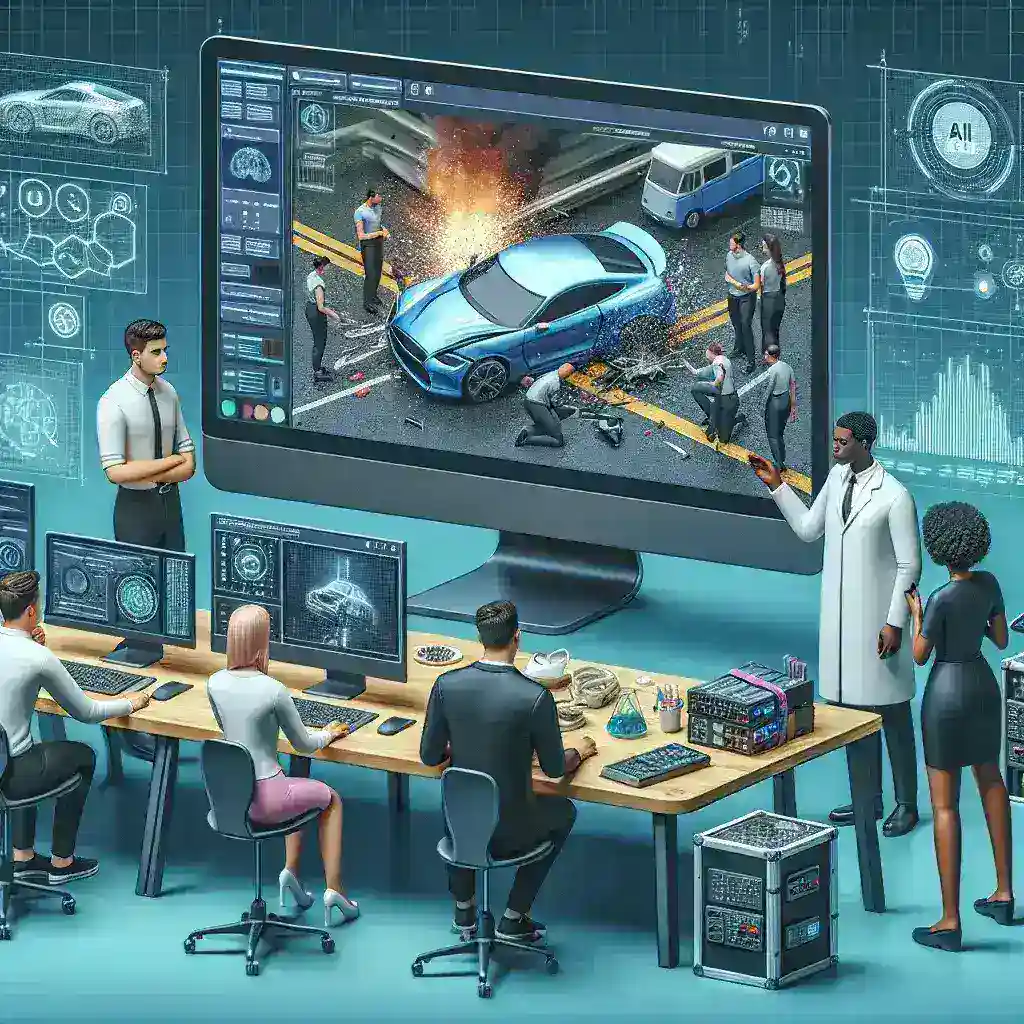Introduction
In a significant move towards enhancing automotive safety, Tesla has announced the unveiling of its AI-powered accident reconstruction technology, specifically designed for U.S. regulators. This innovative tool aims to transform how accidents are analyzed and understood, setting a new standard in the industry.
Understanding AI-Powered Accident Reconstruction
AI-powered accident reconstruction utilizes advanced algorithms and data analytics to recreate vehicular accidents in a virtual environment. By processing a wide array of data, including vehicle telemetry, environmental conditions, and crash dynamics, this technology can provide insights that were previously unattainable.
Historical Context
The concept of accident reconstruction has evolved significantly over the years. Traditionally, accident investigators relied on physical evidence, witness statements, and rudimentary tools to piece together the events leading up to a crash. The introduction of AI technology marks a paradigm shift, offering a more precise and systematic approach to understanding the complexities of vehicle accidents.
The Role of AI in Accident Reconstruction
Tesla’s AI technology leverages machine learning, a subset of artificial intelligence, to analyze vast datasets collected from its fleet of vehicles. Here are some key components of this technology:
- Data Collection: Tesla vehicles are equipped with numerous sensors that capture real-time data, including speed, braking, and steering inputs.
- Simulation: The data collected is used to create realistic simulations of the accident scenarios, allowing for a detailed analysis of the events.
- Predictive Analysis: By examining past incidents, the AI can identify patterns and predict future accident scenarios, aiding in preventive measures.
The Implications for U.S. Regulators
This innovative approach has far-reaching implications for U.S. regulators. By providing a comprehensive analysis of accidents, the AI technology can assist regulatory bodies in making informed decisions about vehicle safety standards and regulations. Here are some potential benefits:
1. Enhanced Safety Standards
The insights gained from AI-powered accident reconstruction can inform the development of more stringent safety regulations, ensuring that vehicle manufacturers adhere to the highest safety standards.
2. Improved Accident Investigations
Regulatory agencies will be able to conduct more thorough investigations into accidents, leading to a better understanding of causative factors and contributing elements.
3. Data-Driven Policies
With access to detailed accident data, regulators can implement data-driven policies that address the specific safety needs of the automotive landscape.
Challenges and Considerations
Despite the promising benefits, there are challenges associated with the implementation of AI in accident reconstruction:
- Data Privacy: The collection and utilization of extensive data raise concerns about individual privacy and data protection.
- Interpretation of Results: The accuracy of AI analysis depends heavily on the quality of the data fed into the system, necessitating stringent data validation protocols.
- Regulatory Approval: The acceptance and integration of AI technology in regulatory processes require collaboration between Tesla, regulatory bodies, and other stakeholders.
Future Predictions
Looking ahead, the implications of Tesla’s AI-powered accident reconstruction technology extend beyond immediate regulatory applications. Here are some future predictions:
1. Global Influence
Tesla’s advancements in AI technology could set a global benchmark for accident reconstruction processes, leading to widespread adoption of similar technologies across the automotive industry.
2. Integration with Autonomous Vehicles
As the industry moves towards greater automation, the integration of AI-powered accident reconstruction will play a crucial role in enhancing the safety and reliability of autonomous vehicles.
3. Continuous Learning and Improvement
The AI system will continue to learn from new data, enhancing its predictive capabilities and refining its analysis over time.
Expert Insights
Industry experts have expressed optimism regarding Tesla’s latest innovation. Dr. Jane Smith, a renowned automotive safety researcher, stated, “The integration of AI in accident reconstruction marks a significant leap forward in our understanding of vehicular safety. It has the potential to save lives and foster a culture of safety in the automotive sector.”
Conclusion
Tesla’s unveiling of AI-powered accident reconstruction for U.S. regulators represents a transformative development in automotive safety. By harnessing the power of artificial intelligence, Tesla is paving the way for a future where accident analysis is not only more accurate but also integral to regulatory processes. As the technology continues to evolve, it holds the promise of making roads safer for everyone.
